Vienna is divided into 23 districts – administrative areas of different sizes and with their own specific characteristics and charm. Vienna districts are both numbered and have a name, so it is easy to navigate.
Their numbers are linked to postal codes, so if an address in Vienna has a postal code 1210, it is in the 21st district (middle number from postal code 1210). Here is another example – 1010 is a postal code from first district – 1010.
Also, street names displayed on plates are numbered with district numbers, so if plate reads 4. Prinz Eugen-Straße, this means you are in the 4th district. This makes navigation through Vienna really easy.
From 23 districts, first nine are considered inner districts as they are located around city center. The remaining 14 districts (10-23) are considered outer districts as they are further away from the city center.
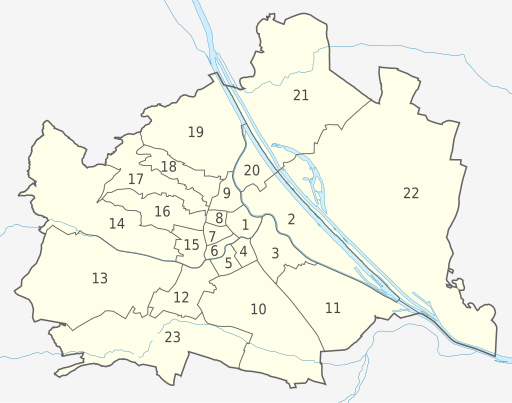
Here’s a detailed Vienna districts guide, along with key highlights, postcodes (zip codes), landmarks, and interesting facts.
District 1 – Innere Stadt – 1010
The main, central district is located in the geographical center of Vienna. Home to Stephan Platz (Stephansplatz) and St. Stephen’s Cathedral (Stephansdom). This is the main tourist flocking district with many important landmarks and high-end shopping and dining areas.
It is a part of the Old Town and has a couple of pedestrian areas popular with tourists and Vienna residents alike. Innere Stadt is circled by Ringstraße, a spacious boulevard following the route of the former city walls.
The first district is home to Kunsthistorisches (Art History) and Naturhistorisches (Natural History) museums, National Library, and several other important museums. The district has many palace buildings, mostly from the 19th and early 20th century: Palais Niederösterreich, Palais Dietrichstein, Stadtalais Liechtenstein, Palais Porcia, Palais Starhemberg, Palais Esterhazy, Hochhaus Herrengasse and main one being The Hofburg.
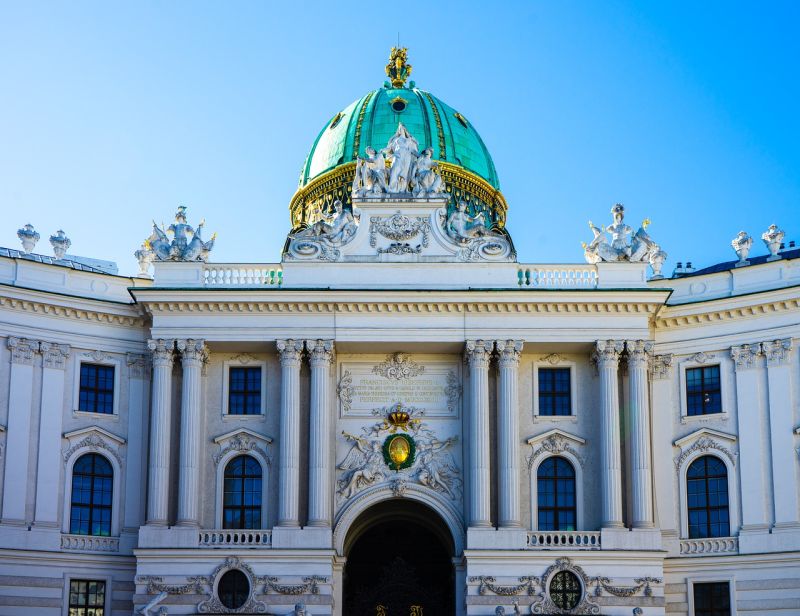
Popular Landmarks
- St. Stephen’s Cathedral (Stephansdom): The most iconic Gothic cathedral in Vienna, dating back to the 12th century.
- Hofburg Palace: The former imperial palace of the Habsburg dynasty, housing the Austrian National Library, the Sisi Museum, and the Imperial Apartments.
- Albertina Museum: Famous for its large collection of graphic art, including works by artists like Picasso and Michelangelo.
- Graben and Kohlmarkt: Famous shopping streets with luxury boutiques and historic cafés.
What to Do
- Stroll around the Ringstrasse boulevard to see some of Vienna’s most famous buildings.
- Attend a classical music concert at the Musikverein or the Vienna State Opera.
Interesting Facts
- The first district was declared a UNESCO World Heritage site in 2001 due to its historical significance.
- Vienna’s “Stadtpark” features the Johann Strauss monument, a popular photo spot.
District 2 – Leopoldstadt – 1020
Leopoldstadt is the district on the island between the Danube and the Donaukanal. It shares the island with the 20th district, Brigittenau. It is home to Praterstern, the city’s busiest traffic node, and Prater Park with the Viennese Giant Ferris Wheel.
The second district has several more landmarks and attractions such as Augarten park with Palais Augarten and Porcelain Factory, Wiener Sängerknaben (Vienna Boys′ Choir, also in Palais Augarten), Carmelite Church (Karmeliterkirche), Karmelitermarkt, Produktenbörse (Corn Exchange) and Kirche St. Leopold.
Leopoldstadt has a strong Jewish heritage and also unfortunate history as Jewish people were gathered from here to be sent to the concentration camps during the Holocaust. Today, Jewish presence in culture and commerce is revived and thriving in the second district.
The second district has a very central position and it is well connected to the city center, so it is a very popular residential area as well, with much lower rent than the 1st district.
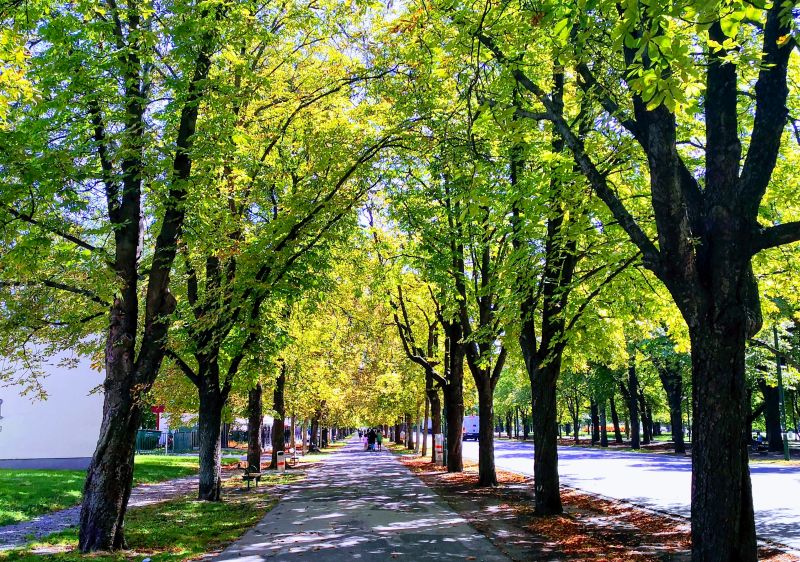
Popular Landmarks
- Prater Park: Home to the Giant Ferris Wheel (Riesenrad), one of Vienna’s iconic attractions.
- Augarten: A baroque park known for its porcelain factory and lovely gardens.
- Vienna Jewish Museum: Documenting the history of Jewish life in Vienna.
What to Do
- Spend a day at Prater enjoying amusement rides and relaxing in the vast park.
- Explore Karmelitermarkt, a local market with fresh produce and artisanal food.
Interesting Facts
- The Giant Ferris Wheel was built in 1897 to celebrate Emperor Franz Josef I’s golden jubilee.
- Leopoldstadt is often referred to as the “green lung” of Vienna due to its expansive parks and green spaces.
District 3 – Landstraße – 1030
Landstraße is next to Innere Stadt (District 1), right on the right side of the Donaukanal. It includes Belvedere Palace and the central train station of Vienna, Wien Mitte. Apart from Belvedere, there are a few notable cultural institutions in this district as well: Kunsthaus Wien, Hundertwasserhaus Wien, Akademietheater, Konzerthaus, and Heeresgeschichtliches Museum.
There are also several palaces of historical importance: Schwarzenberg Palace, Palais Schwarzenberg, Palais Wittgenstein, and Palais Rasumofsky. The third district also has several churches from different denominations and architectural styles: Gardekirche, Elisabethinenkirche, Rochuskirche Church, Kirche Maria Geburt, and the Russian Orthodox Church.
From other landmarks, it is worth mentioning Schwarzenbergplatz Square with Hochquellbrunnen Fountain, and the Soviet War Memorial.
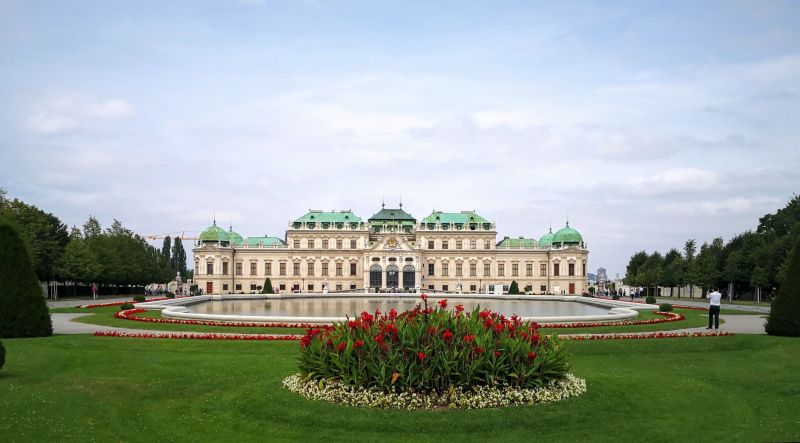
Popular Landmarks
- Belvedere Palace: A baroque palace with a stunning art collection, including Gustav Klimt’s The Kiss.
- Hundertwasserhaus: A unique residential building designed by artist Friedensreich Hundertwasser, featuring colorful facades and an organic, non-linear design.
What to Do
- Visit the Belvedere Museum to see its world-renowned collection of Austrian art.
- Stroll through the Botanical Gardens of the University of Vienna.
Interesting Facts
- The district was home to Johann Strauss II, the famous composer of “The Blue Danube”.
- The Hundertwasserhaus is considered one of Vienna’s most unusual architectural works, with no straight lines or standard building norms.
District 4 – Wieden – 1040
Wieden is one of the small Vienna districts. It is located south of the city center and includes Karlsplatz with the famous Karlskirche and also the Vienna University of Technology. Notable attractions and landmarks also include Wien Museum, Naschmarkt, Theklakirche, Paulanerkirche, and Elisabethkirche.
This district is popular with tourists in the area of Karlsplatz and Naschmarkt.

Popular Landmarks
- Karlskirche (St. Charles Church): One of the most beautiful baroque churches in Vienna.
- Naschmarkt: Vienna’s largest and most famous open-air market, offering a wide variety of food, from local delicacies to international cuisine.
- Technical University of Vienna: One of the most important academic institutions in Austria.
What to Do
- Explore Naschmarkt and enjoy diverse food and drinks.
- Attend a concert at Karlskirche, which often hosts classical music performances.
Interesting Facts
- Wieden is one of the oldest districts in Vienna, dating back to the early medieval period.
- The Wieden Festival is a popular annual event that features music, food, and local artisans.
District 5 – Margareten – 1050
Margareten and Wieden were one district until 1861. It is a small district, almost identical in size to Wieden. Famous for being the home to the Austrian Society and Economy Museum, known globally for the introduction of the Vienna Method, a data visualization method.
This district also has a history of labor and worker’s movement all the way before WWII. It was greatly destroyed during WWII and rebuilding it took some time. Today, the district has its charm and you can find very cheap rentals and are very near to the city center.
Popular Landmarks
- Margaretenhof: A notable example of early 20th-century social housing.
- Theater Akzent: A popular venue for contemporary theater and cultural events.
What to Do
- Visit Bruno-Kreisky-Park, a popular green space with a local vibe.
- Explore Schlossquadrat, a courtyard featuring charming cafés and shops.
Interesting Facts
- Margareten is famous for its traditional Viennese heuriger, small wine taverns serving local wine and food.
- The area has strong ties to socialist history, and you can see this reflected in its architecture.
District 6 – Mariahilf – 1060
This is another of the smaller Vienna districts, part of the central city area. Popular with a shopping and dining area along Mariahilfer Straße and also includes Haus des Meeres Aqua Terra Zoo, and Vienna aquarium.

Academy of Fine Arts is located in this district, and this is a reason for a somewhat bohemian feel in the area since the district is filled with small art galleries and art and artisan souvenir shops.
Theater an der Wien is also in the Mariahilf district. Mozart‘s Magic Flute was first performed there. Joseph Haydn, another famous classical composer, lived in the Mariahilf area. He lived near Kirche St. Aegyd, which is now affectionately called Haydnkirche.
Another notable church in the area is Mariahilfer Church, a Baroque-style church from the 18th century.
Mariahilf is a district popular with tourists also because offers many streets for walking and wandering around and looking at the small shops or having a coffee break in one of many cafes.
Popular Landmarks
- Haus des Meeres: A former World War II anti-aircraft tower turned aquarium, home to sea life, birds, and reptiles.
- Raimund Theater: A famous venue for musicals and theater productions.
What to Do
- Shop along Mariahilfer Straße, which offers a variety of international brands and local boutiques.
- Visit the Haus des Meeres for a unique indoor zoo and panoramic views of the city from its rooftop.
Interesting Facts
- The Haus des Meeres still retains its original bunker structure from World War II, offering an interesting mix of history and modern attraction.
- Mariahilf was historically a working-class district that underwent significant gentrification.
District 7 – Neubau – 1070
Neubau is another small district, but it is a host to the Museumsquartier, a large museum and gallery complex. Leopold Museum, MUMOK, Kunsthalle Wien, Architekturzentrum, ZOOM Kindermuseum, and MQ POINT are just selected top cultural institutions of about 60 located in the area, which makes it one of the biggest in Europe.
Many cafes, bars, and restaurants in the area are making visits to Neubau enjoyable and you can always expect some street performances in and around Museumsquartier, especially in summer.
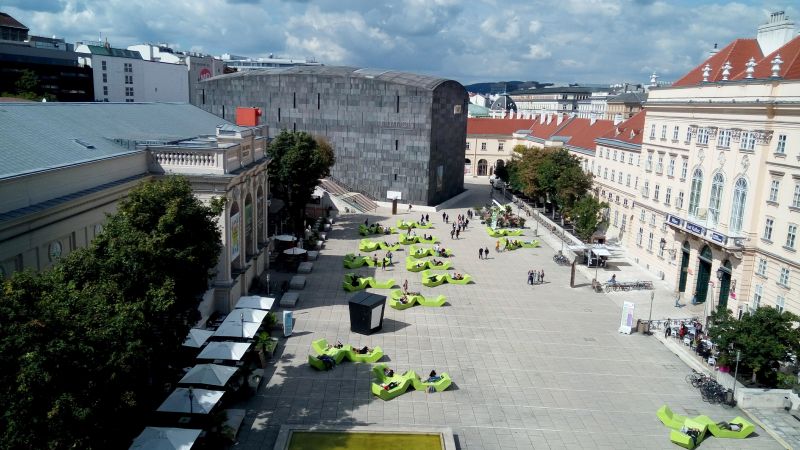
Other than Museumsquartier, the 7th district also is home to Volkstheater, ‘people’s theatre’, built in the 19th century, Hofmobiliendepot, a museum of Imperial furniture and Stiftskaserne, a former monastery turned into the military base that had some dark history, especially during WWII.
As in the rest of central Vienna, there are several churches in the area: Altlerchenfelder Church, Lazaristenkirche Church, and Ulrichskirche Church.
Popular Landmarks
- MuseumsQuartier: One of the largest cultural complexes in the world, home to the Leopold Museum, MUMOK, and contemporary art spaces.
- Volkstheater: A major venue for plays and theatrical performances.
What to Do
- Wander through the MuseumsQuartier and explore the art museums or relax in the open courtyards.
- Check out Burggasse 24, a popular café and vintage store in the area.
Interesting Facts
- Neubau was originally settled by artisans and craftsmen, and it has maintained this creative spirit through generations.
- The area has been a center for alternative and counter-culture movements since the 1970s.
District 8 – Josefstadt – 1080
Josefstadt is the smallest one of the Vienna districts. It is situated adjacent to the Rathaus, and close to the Austrian Parliament and the University of Vienna. The district is mostly residential, but there is still a number of landmarks to visit.
There are several palaces in the area: Palais Schönborn, hosting Österreichische Volkskundemuseum, a Museum of folk art and culture; Palais Auersperg, Palais Trautson, Palais Damian, and Palais Strozzi.
There is a district museum with works of Klimt; Theater in der Josefstadt and Vienna International Theatre are two established performing arts institutions. There are also several small cabaret and small theater scenes around the district.
There are three notable churches in the district: Piaristenkirche Church, Dreifaltigkeitskirche, and Mechitaristenkirche.
Popular Landmarks
- Theater in der Josefstadt: Vienna’s oldest theater, founded in 1788.
- Piaristenkirche Maria Treu: A beautiful baroque church located in the heart of the district.
What to Do
- Attend a performance at the Theater in der Josefstadt, which showcases classic and contemporary plays.
- Enjoy a quiet walk through the narrow streets and stop by local cafés for traditional Austrian coffee.
Interesting Facts
- Franz Grillparzer, the famous Austrian playwright, lived in Josefstadt.
- Despite being the smallest district, Josefstadt has a vibrant cultural scene with many theaters and small independent galleries.
District 9 – Alsergrund – 1090
Alsergrund is the last of the inner districts and it closes the circle around the city center. It is the area of the General Hospital and Vienna Medical University district, and also Sigmund Freud’s Museum.
From other attractions in this district, we can mention Votivkirche Church, Palais Liechtenstein (owned by the royal family of Liechtenstein), and Roßauer Kaserne, a large building that hosted a military base in the past.
Popular Landmarks
- Sigmund Freud Museum: Housed in the former apartment and office of Sigmund Freud, the father of psychoanalysis.
- Votivkirche: A neo-Gothic church built as a symbol of gratitude after the life of Emperor Franz Joseph I was saved from an assassination attempt.
What to Do
- Visit the Sigmund Freud Museum and learn more about Freud’s life and work.
- Explore the Pathological Anatomy Museum located in the former General Hospital.
Interesting Facts
- Alsergrund is where Sigmund Freud lived and worked for nearly 50 years.
- The district was once home to many famous intellectuals, including Ludwig van Beethoven and Franz Schubert.
District 10 – Favoriten – 1100
Favoriten is one of the larger districts with the largest population so far. It is located in the southern part of Vienna. On its northern border, there is the main train station, Wien Hauptbahnhof, and Vienna’s thermal spa in its southern part.
From notable landmarks in this district, we can mention the following: Spinnerin am Kreuz, a rare Gothic shrine, depicting several scenes from the Bible; churches – Oberlaa, Laarberg, and Salvatorkirche; Starhemberg Kaserne, an army base built at the beginning of the 20th century, and 19th-century water tower, construction of historical importance.
Popular Landmarks
- Therme Wien: A large spa complex offering thermal pools, saunas, and wellness treatments.
- Belvedere 21: A contemporary art museum that focuses on Austrian and international modern art.
What to Do
- Spend a day at Therme Wien, one of the largest thermal spas in Europe.
- Visit Favoritenstraße, a vibrant shopping street with a multicultural feel.
Interesting Facts
- Favoriten has one of the most diverse populations in Vienna, with many immigrant communities calling this district home.
- The Bohemian Prater, a small amusement park, offers a nostalgic look into Vienna’s past and is a favorite for families.
District 11 – Simmering – 1110
Simmering is a fairly large district, located next to Favoriten and on the right side of the Donaukanal. It is one of the oldest districts of Vienna, with written records from the early 11th century.
It hosts some quite unique landmarks, such as Gasometer City, former gas tanks converted into an apartment and office complex, and Wiener Zentralfriedhof, Vienna Central Cemetery with around three million people buried there.
From other attractions in the district, it’s worth mentioning Altsimmeringer Pfarrkirche, a parish church from the 18th century, and two parks – Herderpark and Hyblerpark.

Popular Landmarks
- Gasometer City: Four large gas storage tanks that have been transformed into a mixed-use residential, shopping, and entertainment complex.
- Zentralfriedhof (Central Cemetery): One of the largest cemeteries in Europe, where famous figures like Beethoven and Schubert are buried.
What to Do
- Take a tour of the Gasometer City and learn about the redevelopment of this industrial site.
- Visit the Zentralfriedhof, a peaceful and expansive cemetery filled with monuments to some of Austria’s greatest artists and musicians.
Interesting Facts
- The Gasometers were featured in the James Bond movie “The Living Daylights”.
- Simmering is home to many sports clubs, making it a hub for local football and handball teams.
District 12 – Meidling – 1120
Meidling is a small district on the southern bank of the Wien river. Current Chancellor of Austria Sebastian Kurz was raised there and has a private residence in Meidling.
There are a few attractions in this district: Schloss Hetzendorf and Schloss Altmannsdorf, both used as educational institutions; Südwestfriedhof, the second largest cemetery in Vienna and Haydnpark, among others, smaller public parks.
Popular Landmarks
- Schönbrunn Palace: Though primarily in the 13th district, parts of Schönbrunn extend into Meidling, making it a key feature.
- Meidlinger Markt: A popular local market offering fresh produce and food stalls.
What to Do
- Visit Schönbrunn Palace and its extensive gardens.
- Explore the Meidlinger Hauptstraße, a lively shopping street filled with local businesses and cafés.
Interesting Facts
- Meidling is historically associated with brickmaking, and the district grew rapidly as workers moved to Vienna during the industrial revolution.
- The former Meidling Palace was once used as a summer residence by the imperial family.
District 13 – Heitzing – 1130
Hietzing is on the southern bank of the Wien river, and on the west of the Vienna city area. It includes Schönbrunn Palace as one of the top attractions in Vienna. But, Schönbrunn Palace is not the only attraction in this, arguably, greenest district of Vienna (after all, the entire area was hunting grounds for Habsburgs).
Lainzer Tiergarten is a large nature reserve where the imperial family was doing exactly that – hunting. And also, relaxing, as there is a villa there – Hermesvilla, frequented by Emperor Franz Joseph I and his wife, Empress Elisabeth (popular ‘Sisi’).
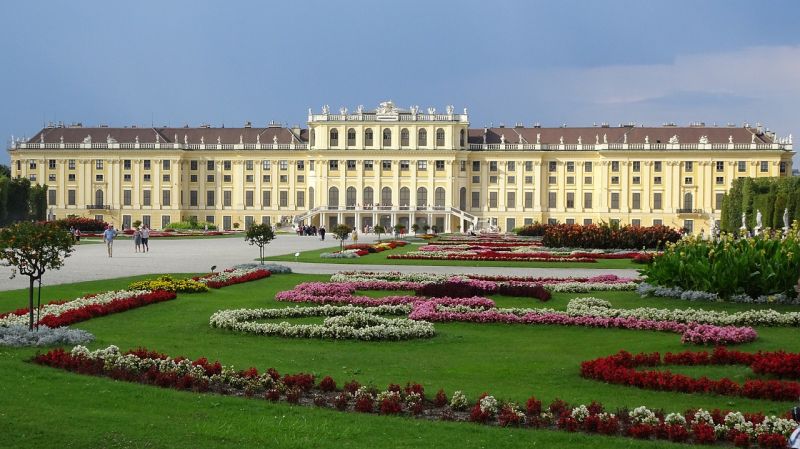
Heitzing was always an area populated with the aristocracy in past times, and now with their descendants or wealthy people in general. This is weirdly noticeable in the local cemetery, Friedhof Hietzing, where expansive tombs are built for deceased wealthy citizens of the district, and not with much artistic taste.
Gustav Klimt is also buried there and this is a reason enough to visit this cemetery. Also, there is a Klimt Villa in Heitzing, where the artist lived and worked until his death in 1918.
Popular Landmarks
- Schönbrunn Zoo: The world’s oldest zoo, located within the Schönbrunn Palace gardens.
- Lainzer Tiergarten: A large nature reserve that was once the hunting grounds of the Habsburg family.
What to Do
- Spend a day at Schönbrunn Zoo, which is home to a wide variety of exotic animals.
- Hike through the Lainzer Tiergarten, where you can spot wildlife and enjoy scenic views of the city.
Interesting Facts
- Empress Elisabeth of Austria (Sisi) spent much of her time at Schönbrunn Palace, and her personal apartments can still be visited today.
- Hietzing has some of Vienna’s most expensive real estate, thanks to its green spaces and quiet, suburban feel.
District 14 – Penzing – 1140
Penzing was one district with Heitzing until they were divided into two districts in 1938. Located on the northern bank of the Wien river, the district is famous for Otto Wagner’s Church – Kirche am Steinhof. The church is set in the center of the compound of the former psychiatric hospital, one of the largest in Europe at the time.
Otto Wagner also designed two villas in Penzing, aptly named Otto Wagner Villa I and Otto Wagner Villa II. They were, of course, built in the Art Nouveau style.
From other notable attractions, we recommend the Technisches Museum (Technical Museum) and the birthplace of Klimt in Baumgarten.
This district is also quite green – almost half the territory is with parks and gardens.
Popular Landmarks
- Otto Wagner Villa: A museum dedicated to the works of architect Otto Wagner, located in his former villa.
- Steinhof Church: A stunning example of Jugendstil (Art Nouveau) architecture, also designed by Otto Wagner.
What to Do
- Visit the Otto Wagner Villa and learn more about one of Vienna’s most famous architects.
- Explore the Steinhof Church, a masterpiece of early 20th-century architecture.
Interesting Facts
- Penzing is home to the Vienna Woods, a UNESCO Biosphere Reserve that offers hiking and outdoor activities just a short distance from the city.
- Steinhof Church is located within a psychiatric hospital complex and is known for its groundbreaking design, which was intended to calm patients.
District 15 – Rudolfsheim-Fünfhaus – 1150
Rudolfsheim-Fünfhaus is on the northern bank of the Wien river and it is a small district surrounded by six other Vienna districts from the area. It is the district with the highest percentage of the foreign-born population in Vienna. One of the main train stations, Westbahnhof, is located here.
From notable attractions in this district, we can mention Maria vom Siege church and Stadthalle, a large concert venue.
Popular Landmarks
- Wiener Stadthalle: Vienna’s largest indoor arena, hosting concerts, sports events, and shows.
- Westbahnhof: One of Vienna’s major train stations, offering easy access to national and international destinations.
What to Do
- Attend a concert or event at Wiener Stadthalle.
- Explore the up-and-coming Reindorfgasse area, known for its alternative shops and trendy cafés.
Interesting Facts
- Rudolfsheim-Fünfhaus is home to a large immigrant population, giving it a distinctly international feel.
- The district is known for its annual Weihnachtsmarkt (Christmas Market), one of the many Christmas events in Vienna.
District 16 – Ottakring – 1160
Formerly a village of Ottakring, this western district is now a thriving neighborhood famous for its brewery and large Balkan immigration, especially from former Yugoslavia. The district lived through the population and construction boom in the 1920s, during the ‘Red Vienna’ period.
Today, Brunnenmarkt is fair competition to the famous Naschmarkt, and there are several areas with distinguished charm throughout the district.
This is not a touristy area so attractions are few, but these are landmarks to visit: Schloss Wilhelminenberg (now a hotel, but you can go there for a coffee, or better, a mélange), Wallfahrtskirche zur Heiligen Theresia vom Kinde Jesu, a pilgrimage church whose name is not easy to pronounce (or remember), Heuriger 10er Marie, a classic tavern to have a nice break and Kuffner Sternwarte, the observatory, one of the three in Vienna.

Popular Landmarks
- Ottakringer Brewery: Vienna’s oldest brewery, still producing traditional Austrian beer.
- Brunnenmarkt: One of Vienna’s largest street markets, offering a wide variety of food from around the world.
What to Do
- Take a tour of the Ottakringer Brewery and sample some local beer.
- Visit Brunnenmarkt to explore the multicultural food stalls and pick up fresh produce.
Interesting Facts
- Ottakring is home to Wilhelminenberg, a scenic hill that offers stunning views of the city and is a popular spot for hiking.
- Brunnenmarkt reflects Ottakring’s diverse population, with vendors from Turkey, the Balkans, and the Middle East.
District 17 – Hernals – 1170
Hernals is the district stretching towards the northwestern outskirts of Vienna. This is also not a touristy area and there are not many interesting things to find there. Locally famous churches to visit there are Kalvarienbergkirche, the Sühnekirche, and the Marienpfarre. There is also a palace with a park, Schloss Neuwaldegg, worth visiting.
Popular Landmarks
- Kalvarienbergkirche: A picturesque church located on a small hill, with a vibrant Easter market each spring.
- Heurigen (wine taverns): Traditional Viennese wine taverns are scattered throughout Hernals, offering local wine and food.
What to Do
- Explore the small wine villages and enjoy a glass of local wine at a heuriger.
- Visit the Kalvarienbergkirche during Easter for the market and festive activities.
Interesting Facts
- Hernals was one of the key locations during the Second Siege of Vienna in 1683, and there are still remnants of fortifications in the area.
- The Alte Hernalser Cemetery contains graves of famous personalities like Franz Schubert’s brother, Ferdinand Schubert.
District 18 – Währing – 1180
Währing is in the northwestern of Vienna and includes the Türkenschanzpark and the University of Natural Resources and Life Sciences. There are several notable buildings/castles in this district, such as Schloß Pötzleinsdorf.
This is also mostly a residential district with very few attractions of interest to tourists.

Popular Landmarks
- Türkenschanzpark: One of the largest parks in Vienna, created in the late 19th century. The park is known for its picturesque ponds, walking paths, and the Paulinenwarte, a historic observation tower offering stunning views of the city.
- Schubertpark: Named after composer Franz Schubert, who lived in Währing for part of his life. The park is a serene spot for relaxation.
- Vienna Observatory (Universitätssternwarte Wien): A 19th-century astronomical observatory that still functions today.
What to Do
- Take a walk through Türkenschanzpark and enjoy the lush greenery and tranquil atmosphere.
- Visit Währinger Friedhof, where famous figures like Franz Schubert and Johannes Brahms were once buried.
Interesting Facts
- The district’s name comes from the Turkish sieges of Vienna in the 16th and 17th centuries. Türkenschanzpark commemorates this history, as it was reportedly the site of a Turkish military camp during the second siege.
- The area is popular among families and affluent residents for its peaceful environment and proximity to nature.
District 19 – Döbling – 1190
Döbling is a northern district and it is one of the larger ones. It is famous for being a residence of Beethoven and it hosts a Japanese Garden.
Karl-Marx-Hof, a large apartment complex dating back from 1920, period of ‘Red Vienna” is also in this district.
What makes this district popular is its location on the outskirts of Wienerwald, Vienna Woods, where many people go for outdoor activities.
Popular Landmarks
- Kahlenberg: A hill that offers one of the best panoramic views of Vienna and the Danube River. The Stefaniewarte, an observation tower, is located here.
- Heurigen in Grinzing: Grinzing is famous for its Heurigen, traditional wine taverns serving locally produced wine and Viennese cuisine.
- Leopoldsberg: Another hill in Döbling with a small church and excellent hiking paths through the Vienna Woods.
What to Do
- Take a hiking trip to Kahlenberg or Leopoldsberg to enjoy nature and stunning city views.
- Visit a Heuriger in Grinzing to experience traditional Viennese hospitality, music, and food.
Interesting Facts
- The Kahlenberg is where King Jan Sobieski of Poland launched the counterattack that ended the Second Siege of Vienna in 1683.
- Döbling is one of the most affluent districts in Vienna, with several villas and luxury homes.
District 20 – Brigittenau – 1200
Brigittenau was one district with Leopoldstadt until they were made two districts in 1900. Named after Brigitta Chapel, built in the 17th century. Other churches in this district include Kirche zum Göttlichen Erlöser and the St. Johann Kapistran-Church.
Popular Landmarks
- Millennium Tower: One of Vienna’s tallest buildings, offering office spaces and entertainment venues, such as shops, restaurants, and cinemas.
- Brigittenauer Sporn: A scenic promenade along the Danube River, perfect for walking or cycling.
- Brigittenau District Museum: A small museum that documents the local history of Brigittenau, focusing on the district’s industrial past.
What to Do
- Take a walk along the Danube Island (Donauinsel), a long, narrow island between the Danube River and the canal, perfect for outdoor activities like cycling, swimming, and boating.
- Visit Millennium City, a modern shopping and entertainment complex that includes the Millennium Tower.
Interesting Facts
- The Donauinsel is a man-made island created as part of a flood control project. Today, it’s a popular recreational area, especially during summer.
- Brigittenau was heavily damaged during World War II due to its proximity to the industrial areas.
District 21 – Floridsdorf – 1210
Floridsdorf is a large district located on the left bank of the Danube and in the north of Vienna and includes a combination of industrial and residential areas. This can be considered a suburban district in general terms. There are very few attractions or landmarks to see here, such as Donaufeld church or Mautner Schlössl with the district museum.
Popular Landmarks
- Floridsdorfer Water Park: A large green area with ponds and wetlands, ideal for birdwatching, walking, and picnicking.
- Old Danube (Alte Donau): A former branch of the Danube River, now a popular spot for boating, swimming, and enjoying the outdoors.
- Stammersdorf Wine Village: Similar to Grinzing in Döbling, Stammersdorf is known for its wine taverns (Heurigen) and vineyards.
What to Do
- Spend time at the Alte Donau, where you can rent boats or simply relax by the water.
- Visit Stammersdorf for a wine-tasting experience in one of its many Heurigen.
Interesting Facts
- The Alte Donau area has transformed into a leisure hotspot, with many beaches and water activities in the summer months.
- Floridsdorf was once an industrial powerhouse, especially in the 19th and 20th centuries, due to its factories and railways.
District 22 – Donaustadt – 1220
Donaustadt is also on the left bank of the Danube and is the largest district of Vienna, occupying almost one-quarter of the city’s area. It is a host of the Vienna International Centre, a large campus and building complex of the United Nations Office in Vienna and several agencies, and also Vienna’s largest conference center.
Alte Donau (Old Danube) is a popular recreation area, together with small national parks and several public parks throughout the district.

Popular Landmarks
- UNO City (Vienna International Centre): The headquarters of several UN organizations, the complex is a symbol of Vienna’s importance on the international stage.
- Danube Tower (Donauturm): A 252-meter-high observation tower offering breathtaking views of Vienna, especially at sunset.
- Donaupark: A large park that surrounds the Donauturm, with walking paths, picnic areas, and a lake.
What to Do
- Visit the Donauturm for panoramic views of the city and dine in the revolving restaurant at the top.
- Explore Donaupark or enjoy water sports on the New Danube (Neue Donau).
Interesting Facts
- Donaustadt hosts the Danube Island Festival (Donauinselfest), Europe’s largest free open-air music festival.
- The UNO City has its own extraterritorial status, meaning it operates independently of Austrian law in many respects.
District 23 – Liesing – 1230
Liesing is the southernmost district, which is also one of the least populated Vienna districts. It includes the Wotruba Church, a unique example of Brutalism in architecture. There are also castles/palaces: Schloss Liesing, Schloss Rodaun, and Schloss Alterlaa, villa Hofmannsthal-Schlössl and the large park of Alt-Erlaa. Other than that, Liesing is mostly a combination of residential and commercial buildings.
Popular Landmarks
- Riverside Shopping Center: One of the largest shopping centers in the district.
- Liesingbach River: A small river that runs through the district, with walking paths along its banks.
- Perchtoldsdorf: Although technically outside the city limits, this nearby wine village is popular with locals and visitors alike for its Heurigen and picturesque landscape.
What to Do
- Visit the Lainzer Tiergarten, a large nature reserve on the edge of the Vienna Woods, for hiking and wildlife spotting.
- Explore the local vineyards and Heurigen in the Liesing and Perchtoldsdorf area.
Interesting Facts
- Liesing was once famous for its brick factories, which supplied much of the material for Vienna’s 19th-century construction boom.
- The district is popular among families for its quiet neighborhoods and green spaces.
Conclusion
This is just a brief description of each of the Vienna districts. We hope this will be a useful starting point in the exploration of the city. We will be writing in more detail as we add articles about attractions and landmarks around Vienna. Safe travels and see you soon!

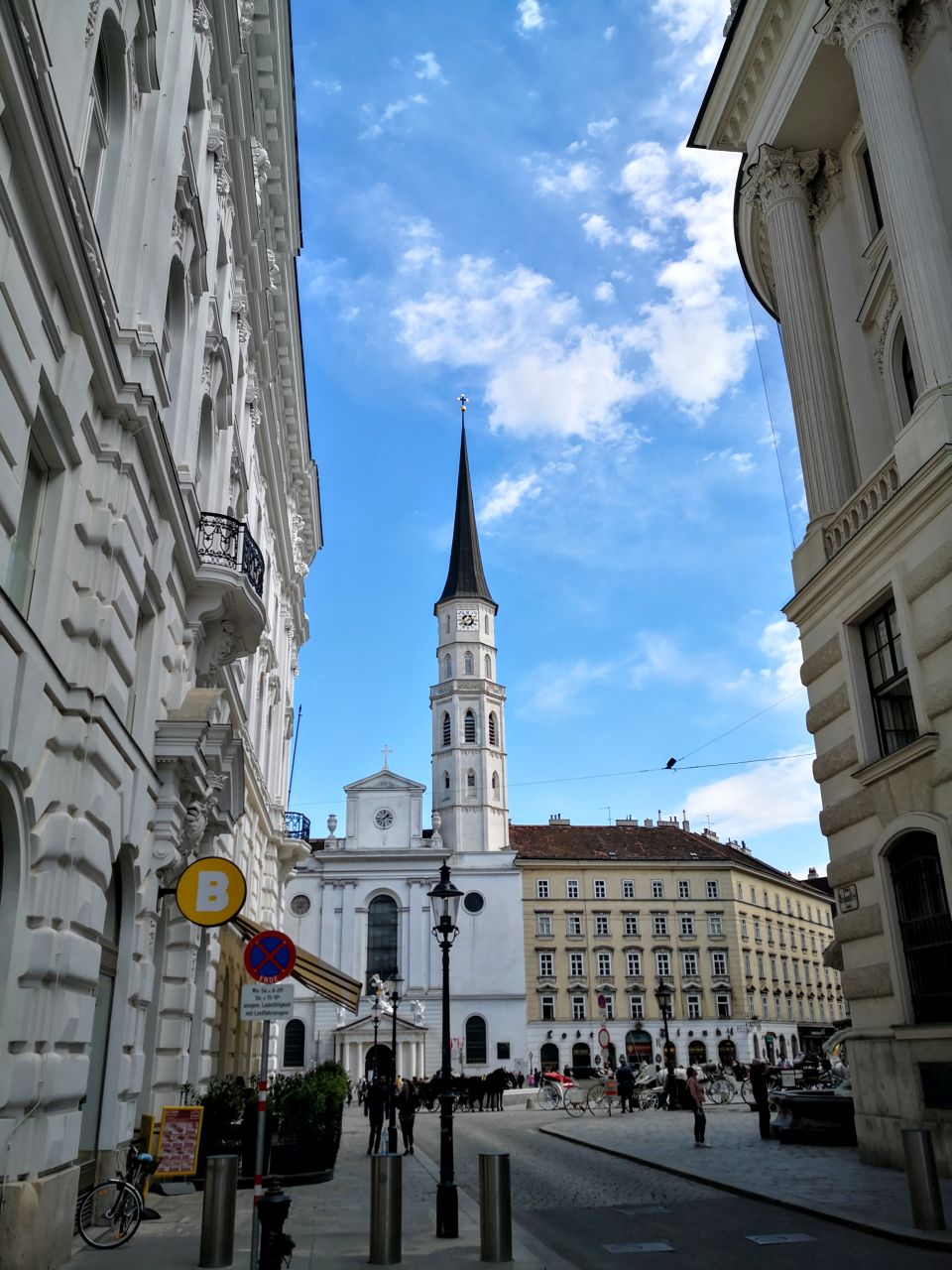
Hello there, I discovered your website by the use of Google at the same time as looking for a related subject, your site came up, it
seems to be great. I’ve bookmarked it in my google bookmarks.
Hello there, simply turned into alert to your blog via
Google, and found that it is really informative.
I am gonna watch out for brussels. I’ll be grateful
when you proceed this in future. A lot of other people might be benefited from
your writing. Cheers!